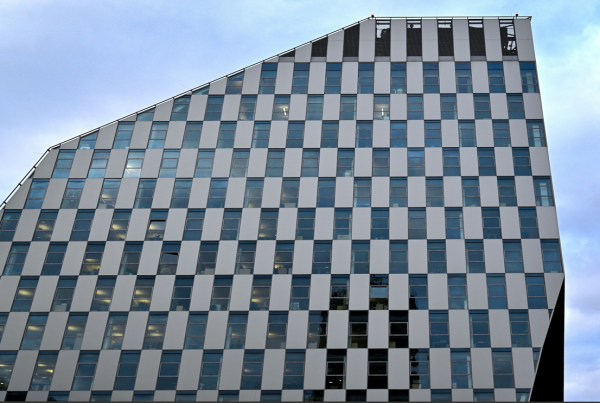Back in 2006, China developed its own Green Building Design Label aka Three Star as a response to LEED. It was meant to complement the prestigious green building standard started by USGBC, not replace it or restrict it in any way. In fact, Three Star up to now is very much voluntary.
However, LEED is still the preferred green building standard of developers. Which isn’t surprising since LEED has been around for more than a decade already. It’s recognized as a global brand, and LEED has become synonymous with credibility and prestige, so much so that it’s become a marketing virtue. For all the contentions LEED has been having these past three years in its country of origin the U.S.,—in China where an estimated 50,000 skyscrapers will get built by 2028, LEED reigns.
China is the second biggest LEED user worldwide, with 187 certified buildings according to Gbig.org. Three-Star on the other hand is relegated to second choice in China.
Green Building with Three-Star
Just like LEED’s Silver, Gold, and Platinum ratings, Three Star awards high-performance buildings with one to three stars, three being the highest. Three Star is a credit-based system as well, where developers must meet minimum requirements for each criterion. These criteria are pretty much the same criteria used as LEED, although LEED employs a different set of rating systems for other construction categories.
The differences only become apparent in terms of the evaluation procedure: provinces and universities are included in the review process whereas LEED operates on a third-party verification system. Also, LEED factors in innovation while Three Star does not. They may differ but at their core both rating systems encourage sustainability in buildings.
One notable deviation of Three Star from LEED is its policy of evaluating a building’s rating after one year of operation. That makes sense because many LEED buildings come pre-certified, based on projected energy savings from energy modeling, which may or not be accurate for the building in question. The 3-Star rating hopes to address that performance gap.
Energy use per square feet is reportedly lower in China than in the U.S., what with the latter’s focus on sealed buildings and centralized systems which is the opposite in China, and that’s something LEED needs to adapt to. With regards to China’s ever-growing explosion, Three Star might be the better fit since it considers land efficiency as one important criterion, says Angela Li at the 2010 Greenbuild.
Barriers to Green Building
A 2012 policy brief prepared by the Center for International Environment and Resource Policy (CIERP) outlines five reasons why green building is still not the norm in China:
- Lack of transparency in the Three Star rating system
- Absence of market demand for green buildings
- Lack of technical capacity
- Lack of a robust green building materials supply chain
- Developers’ perceptions of cost-benefit analysis
To promote the Three Star rating system, the Ministry of Housing and Urban-Rural Development (MOHURD) has been giving out subsidies on a per square meter basis for buildings that achieve 2 or 3 stars. But while incentives can be encouraging, a mandatory green building policy in China just might be the push that developers need to get them on track.
Right now, when developers think of green building, they think LEED not Three Star, because how can they go wrong with an international standard?
One reason why the Three Star system might not be so popular is its inconsistency across various provinces. Since review processes are carried out by respective local government, procedures and standards can vary and might even be less strict than necessary. In this regard, LEED—known for its stringent guidelines—trumps Three Star.
LEED and Three-Star Together
LEED continues to evolve to better address the inherent issues in each country that it serves, realizing that it needs to strike that balance between flexibility and steadfastness. Three Star needs to refine its system as well. Hopefully the two building standards will bridge and fill in the gaps and complement each other.
China’s Five Year Plan is certainly well-meaning, if not a little ambitious. Without the help of both rating systems working in tandem, those optimistic figures of projected energy conserved and carbon emissions reduced will all be for naught.











Great article! As mentioned above there are subsidies that are pushing developers to act: 45 RMB (7 USD) per square meter for 2-Star level and 80 RMB (13 USD) per square meter for 3-Star level. However, in order to achieve these subsidies a project must get the full Construction Label certification (i.e. received one year after full operations match the targeted energy performance). Unfortunately, most local developers still choose to do the Three Star Certification for marketing reasons only and stop at the pre-certified “Design Label” – which is obtained well before the project is completed. In fact, to date, only 6{e3829ec1db02d54faaf9fa2de0d48db26af01d7a7944a63c3b26976124791cab} (approx.) of all projects in China have obtained the full Construction Label Certification (and therefore the subsidies)!!
It is clear we still have a long way to go but there is no doubt that the green building market is growing rapidly and the more Three Star and LEED and can work together, the more benefit it will bring to the industry.
Very interesting reading! Many thanks. I was wondering if an English version of the Three-Star Technical Manual was available to take a look!
Hi Alfonso,
Thanks for the message.
There is no official translation but the closest we have is this work done by a student in Beijing a few years ago. It might be slightly dated but stills serves the purpose as the 3-Star system has not been updated yet: http://chinagreenbuildings.blogspot.hk/2009/02/ministry-of-construction-green-building.html
Hope this helps!